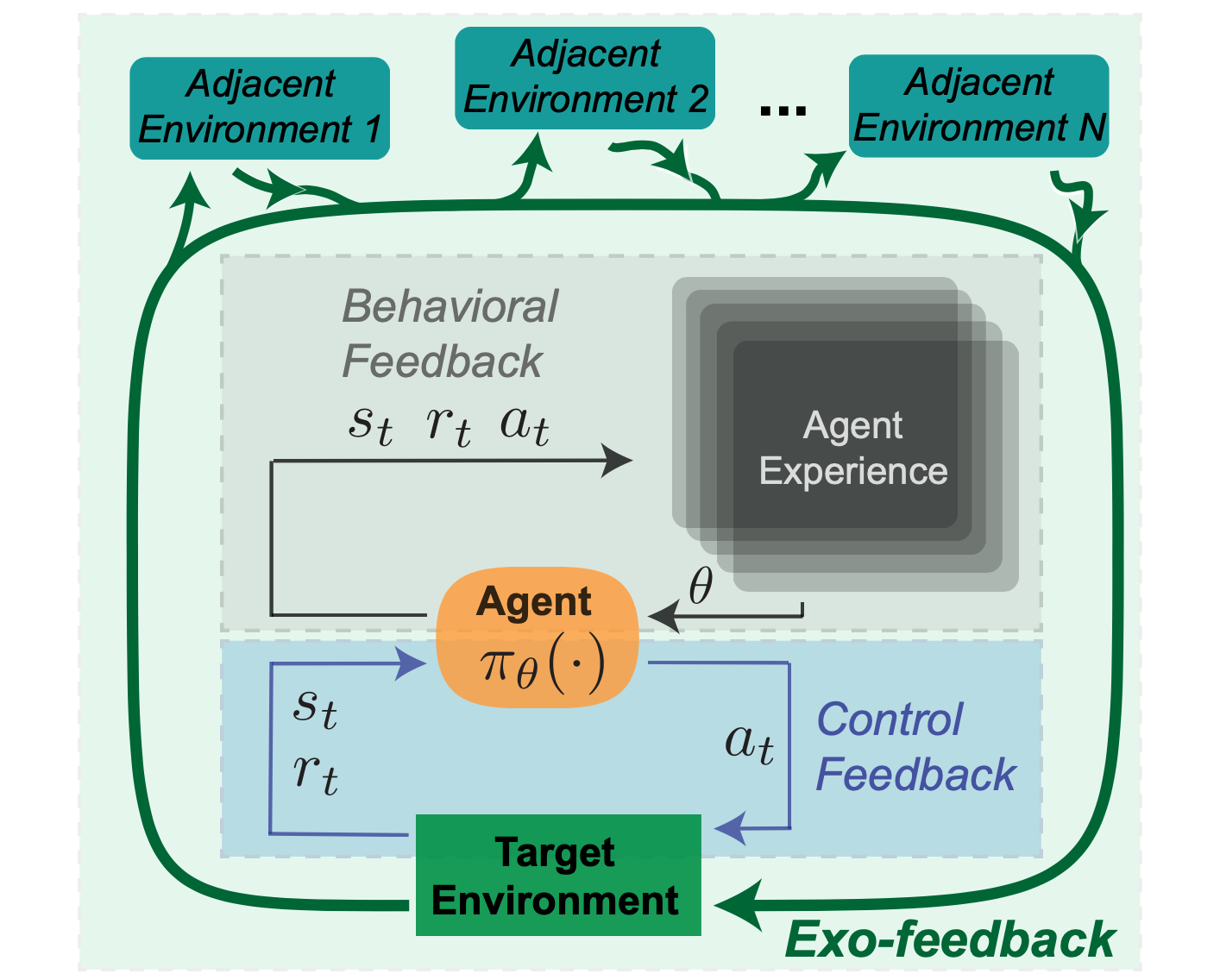The metaverse is a transformational opportunity for the business world

The idea of the metaverse gives enterprise software developers a roadmap to
build software based on a single digital identity where companies join a network
to connect with other companies who have likewise joined. This is not a system
that belongs to any one company, but an environment where all companies are
equal. Why do businesses want to connect? Because that’s the nature of a
business at its essence, connecting with customers, suppliers, and any
stakeholder to establish an expectation of value from the relationship, and then
measure the realization of this value over time. This thinking is not
inconsistent with the idea of a VR environment where a business user engages
with some part of their business in an immersive environment. But we are setting
the aperture much wider to say the entire business should be thought of as being
part of the metaverse, and all of the data that exists about that business can
be aimed at that digital identity to create a digital twin for the entire
business. Then this digital business can connect with other businesses to do
what businesses do — exchange value — but is now supported by a persistent,
interoperable, collaborative digital space that is co-created and co-owned by
those companies who have joined the metaverse.
Cognitive Biases About Leadership and How to Survive Them
We develop cognitive biases based on our life experience. Just as we expect
teachers to be good with kids and surgeons to have a steady hand, we also hold
behavioral expectations for our leaders. Today’s emphasis on servant leadership
has us all believing that leaders are heroes, existing to serve the people and
their every action should be a selfless gesture. Then, when they fail to act in
accordance with our beliefs, we become disillusioned — the hero has fallen and
everything they ever did, good or bad, gets lumped into one big giant
disappointment. That’s a lot of burden for a leader to bear. Instead of looking
at leaders as one whole unit, we need to see them as a collection of basic human
traits. We forget that within every leader is a person, with flaws and
imperfections. Instead of putting the whole person on a pedestal as some kind of
one-size-fits-all embodiment of goodness, just admire them for their strengths.
Unpack what you like about them without discarding the whole leader. Take the
good they accomplished for what it is, but don’t blame humans for not being
angels.
Data Is The New Business Fuel, But It Requires Sound Risk Management

Today’s remote or hybrid work model poses a whole new set of security
challenges. Many companies can minimize risk by leveraging a multicloud
strategy, but the risk associated with malware or ransomware can compromise
crucial corporate and customer data. Despite this, according to a report from
Menlo Security, only 27% of organizations have advanced threat protection in
place for all endpoint devices with access to company data. It’s crucial that
companies deploy advanced cybersecurity software and also train employees on
acceptable use of public or home-based Wi-Fi usage. While enterprise data
provides the fuel that drives accurate AI, it’s important that data scientists
ensure that bias doesn’t creep into the algorithms that are developed. Data
should be analyzed to ensure that it is diverse and doesn’t lead to any
decisions that could provide an unfair advantage to certain populations. As an
example, AI that helps to determine the best suppliers to work with should be
trained with diverse supplier data. Speaking of suppliers, it’s not enough
that data has proper governance within the organization.
How Aurora Serverless made the database server obsolete
Amazon Aurora Serverless v1 changed everything by enabling customers to resize
their VMs without disrupting the database. It would look for gaps in
transaction flows that would give it time to resize the VM. It would then
freeze the database, move to a different VM behind the scenes, and then start
the database again. This was a great starting point, explains Biswas, but
finding transaction gaps isn't always easy. "When we have a very chatty
database, we are running a bunch of concurrent transactions that overlap," he
explains. "If there's no gap between them, then we can't find the point where
we can scale." Consequently, the scaling process could take between five and
50 seconds to complete. It could sometimes end up disrupting the database if
an appropriate transaction gap could not be found. That restricted Aurora
Serverless instances to sporadic, infrequent workloads. "One piece of feedback
that we heard from customers was that they wanted us to make Aurora Serverless
databases suitable for their most demanding, most critical workloads,"
explained Biswas.
The ever-expanding cloud continues to storm the IT universe

VMware Inc. several years ago cleaned up its fuzzy cloud strategy and
partnered up with everyone. And you see above, VMware Cloud on AWS doing well,
as is VMware Cloud, its on-premises offering. Even though it’s somewhat lower
on the X-axis relative to last quarter, it’s moving to the right with a
greater presence in the data set. Dell and HPE are also interesting. Both
companies are going hard after as-a-service with APEX and GreenLake,
respectively. HPE, based on the survey data from ETR, seems to have a lead in
spending momentum, while Dell has a larger presence in the survey as a much
bigger company. HPE is climbing up on the X axis, as is Dell, although not as
quickly. And the point we come back to often is that the definition of cloud
is in the eye of the customer. AWS can say, “That’s not cloud.” And the
on-prem crowd can say, “We have cloud too!” It really doesn’t matter. What
matters is what the customer thinks and in which platforms they choose to
invest. That’s why we keep circling back to the idea of supercloud. You are
seeing it evolve and you’re going to hear more and more about it.
Solving Business Problems With Blockchain

Smart contracts are one of the applications of blockchain that can vastly help
companies in securing a deal. By using smart contracts, companies can form an
electrical code that assists organizations to develop a venture in a
conflict-free manner. Unlike traditionally, if a company tries to change the
terms of the contract or denies to release a payment, everybody on the network
can leverage the technology’s transparency to view the same, and the
contract’s code automatically freezes the deal. The agreement would not
continue further until the company pays the due or goes back to keeping up
with the guidelines. This smart management of contracts helps businesses to
maintain operations functioning without any friction. As blockchain is a
technology that increases transparency, keeping track of the incoming and
outgoing products from the site can be managed efficiently by everyone on the
network. Every time a product halts at a specific gateway, the same gets
documented and inserted into the blockchain ledger. This documentation
increases transparency on cargo status and ensures they reach retailers on
time and intact in condition.
The Future of Health Data Management: Enabling a Trusted Research Environment

TRE is becoming a commonly used acronym among the science and research
community. In general, a TRE is a centralized computing database that securely
holds data and allows users to gain access for analysis. TREs are only
accessed by approved researchers and no data ever leaves the location. Because
data stays put, the risk of patient confidentiality is reduced. ... TREs are
becoming the architectural backbone for health data in many research
organizations. While this is a step in the right direction, many TREs still
can’t speak to colleagues from other organizations, or even other departments
within their own organization. ... As the genomic sector continues to grow,
the capability of TREs to communicate will allow researchers and scientists to
effectively collaborate to overcome life threatening diseases and diagnosis by
breaking down the “silos” of health data. That doesn’t mean moving data. Life
sciences data sets are too large to move efficiently – and to complicate
matters, many data security regulations forbid data to leave an organization,
state or nation.
Designing Societally Beneficial Reinforcement Learning Systems

As an RL agent collects new data and the policy adapts, there is a complex
interplay between current parameters, stored data, and the environment that
governs evolution of the system. Changing any one of these three sources of
information will change the future behavior of the agent, and moreover these
three components are deeply intertwined. This uncertainty makes it difficult to
back out the cause of failures or successes. In domains where many behaviors can
possibly be expressed, the RL specification leaves a lot of factors constraining
behavior unsaid. For a robot learning locomotion over an uneven environment, it
would be useful to know what signals in the system indicate it will learn to
find an easier route rather than a more complex gait. In complex situations with
less well-defined reward functions, these intended or unintended behaviors will
encompass a much broader range of capabilities, which may or may not have been
accounted for by the designer. ... While these failure modes are closely related
to control and behavioral feedback, Exo-feedback does not map as clearly to one
type of error and introduces risks that do not fit into simple categories.
Don’t Fear Artificial Intelligence; Embrace it Through Data Governance

Data-centric AI is evolving, and should include relevant data management
disciplines, techniques, and skills, such as data quality, data integration, and
data governance, which are foundational capabilities for scaling AI. Further,
data management activities don’t end once the AI model has been developed. To
support this, and to allow for malleability in the ways that data is managed,
HPE has launched a new initiative called Dataspaces, a powerful cloud-agnostic
digital services platform aimed at putting more control into the hands of data
producers and curators as they build intelligent systems. Addressing, head on,
the data gravity and compliance considerations that exist for critical datasets,
Dataspaces gives data producers and consumers frictionless access to the data
they need, when they need it, supporting better integration, discovery, and
access, enhanced collaboration, and improved governance to boot. This means that
organisations can finally leverage an ecosystem of AI-centric data management
tools that combine both traditional and new capabilities to prepare the
enterprise for success in the era of decision intelligence.
How DAOS Are Changing Leadership
Traditionally, top-down leadership comes to those who either already have power or the ability to purchase it. Since everyone has equal shares in a DAO, authority is not "given" to anyone. Instead, it's earned by the merits of the proposals made. This creates an organization that follows the guidance of someone people are voluntarily following. This always yields better results, whether through growth, innovation or higher profits. This style of leadership is something all good leaders can practice. Even if they didn't "earn" their role in the same way, they can earn the trust and loyalty of their team through their actions. ... Modern corporations are like enormous ships that require huge amounts of time and effort to change course. There is endless red tape and bureaucracy to navigate before any real change can be implemented. Because DAOs are more democratic, changes can be proposed and implemented with relatively little hassle. While DAOs are primarily based on the division of funds, leaders can still note how the process works and see how efficient it is. The level of efficiency DAOs create is something that great leaders can seek to replicate in their own organizations.
Quote for the day:
"Challenges in life always seek
leaders and leaders seek challenges." -- Wayde Goodall
No comments:
Post a Comment